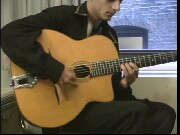
|
• MUSIC BOOKS
WHAT'S NEW
GROUPS & PERSONALITIES
ACOUSTIC GUITAR
OPEN TUNINGS
OPER TUNINGS/BOTTLENEK
BLUES GUITAR
COUNTRY BLUES/ACOUSTIC BLUES
CLASSICAL GUITAR
CLASSICAL and
SACRED, CHRISTIAN, CHRISTMAS
NEO-CLASSICAL
FLAMENCO
LATIN
COUNTRY / BLUEGRASS
BANJO, MANDOLIN and...
JAM '50/backing tracks
JAM '60 backing tracks
JAM '70 backing tracks
JAM '80/backing tracks
JAM '90/backing tracks
JAM '00 backing tracks
JAM BLUES/backing tracks
JAM COUNTRY/backing tracks
JAM JAZZ/backing tracks
JAZZ GUITAR
JAZZ METHODS
GYPSY JAZZ, SWING, MANOUCHE
METHODS FOR GUITAR
PIANO/KEYBOARDS e...
ROCK and ROLL
RHYTHM and BLUES, SOUL, DISCO, FUNK
ANTHOLOGY '70
ANTHOLOGY '80
ANTHOLOGY '90
ANTHOLOGY '00
FILM/MOVIE/TV
SCALES MODES ARPEGGIOS
HARMONY, CHORDS
GUITAR TECHNIQUE & INSTRUCTION
TAPPING
ELETTRONIC
AMPLI SETUP
SOUNDS AND EFFECTS
GUITAR MAKING
INSTRUMENTAL REFERENCE, BIOGRAPHY
METHODS FOR BASS GUITAR
METHODS FOR DRUM
HARMONICA
BOOKS
• VIDEO/DVD INSTRUCTIONAL DVD
• CLASSICAL AND FLAMENCO GUITARS, & ACCESSORIES
|
|
|
 |
INSTRUMENTAL REFERENCE, BIOGRAPHY |
1 - 2 - 3 - 4 - 5 - 6 - 7 - 8 - 9 - 10 - 11 - 12
|